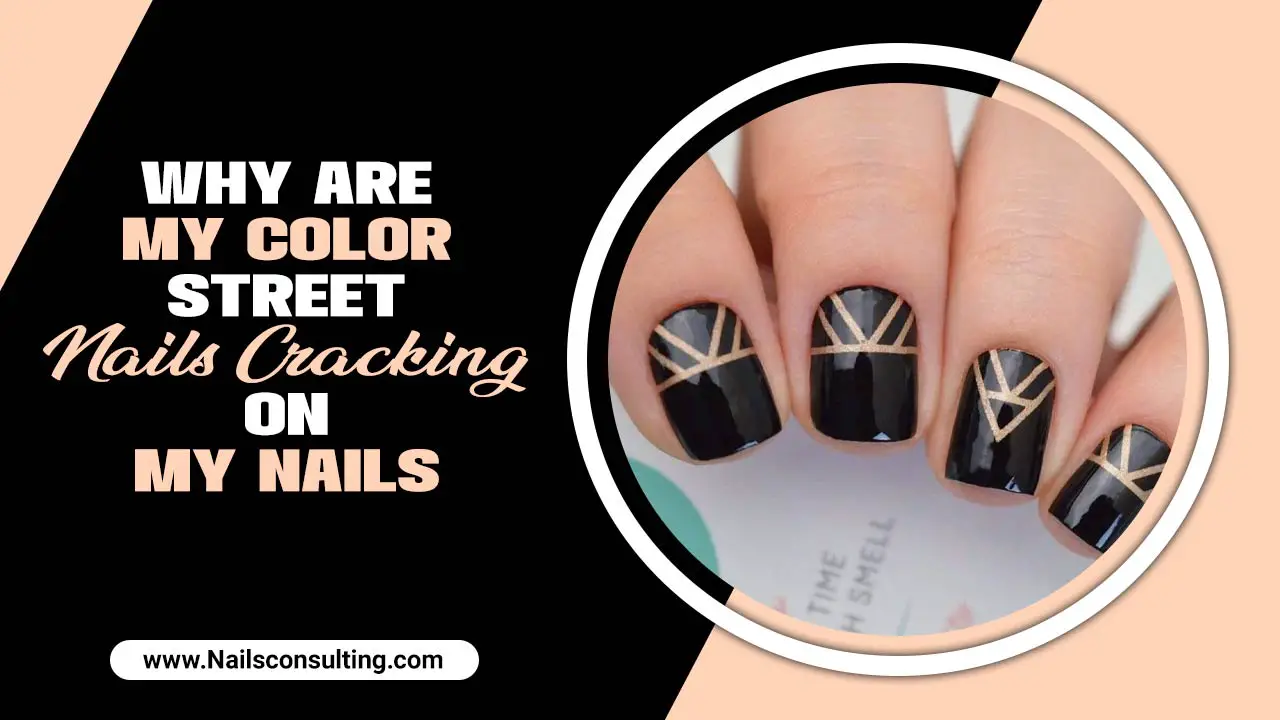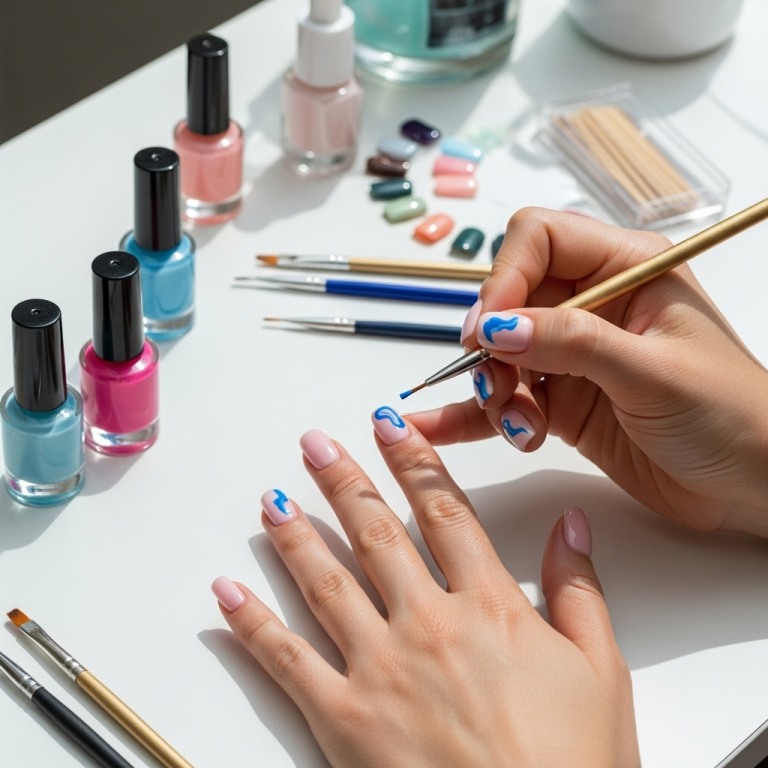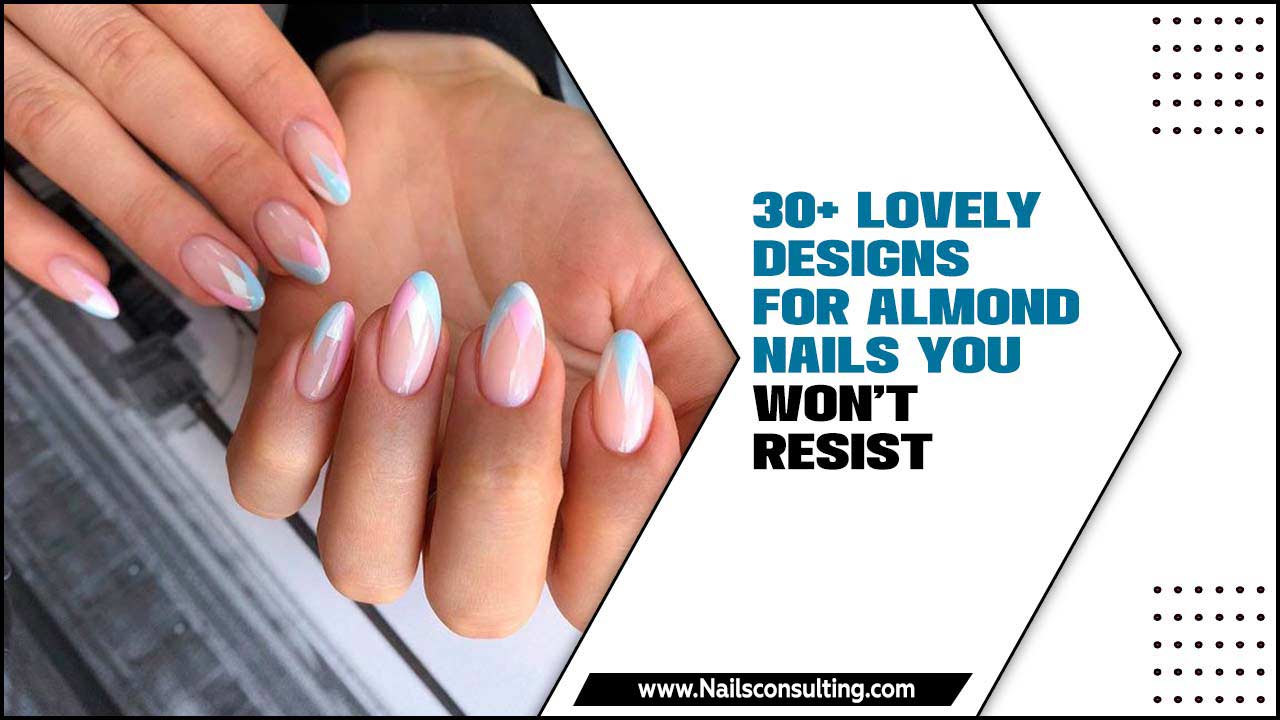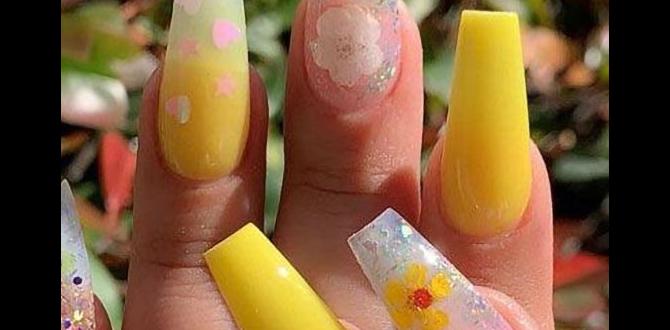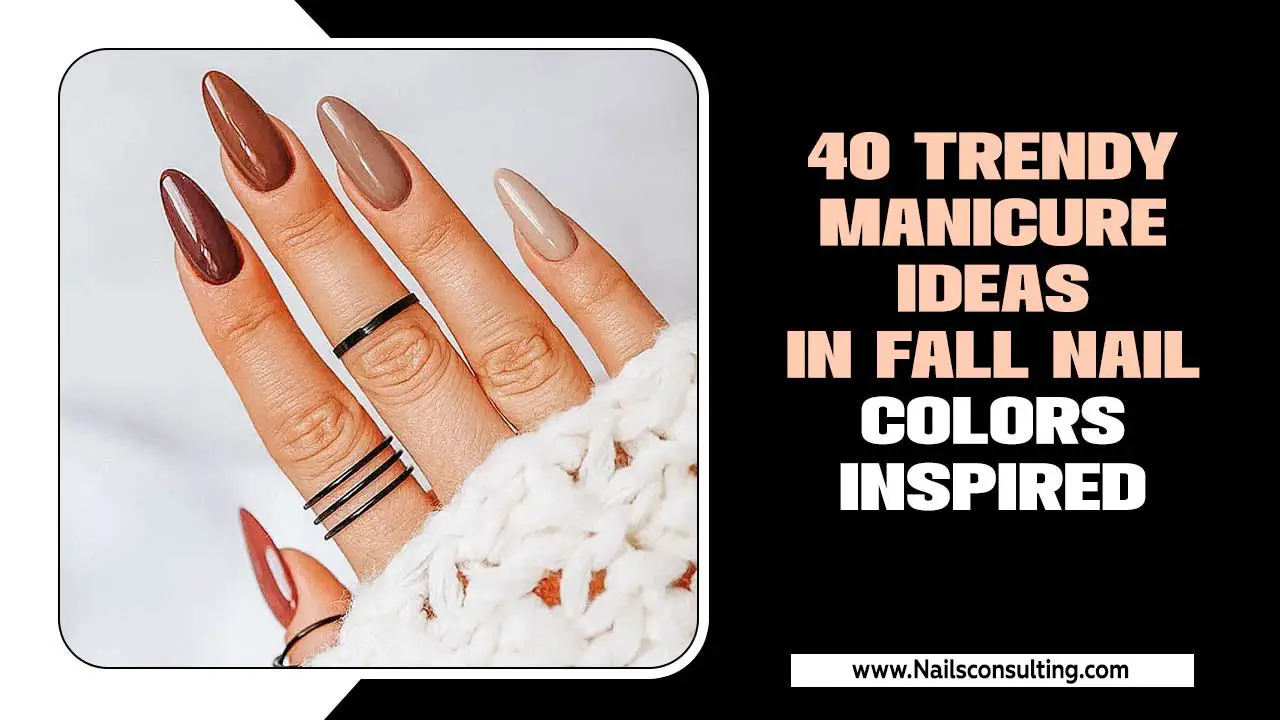Choosing between square and oval nails is a common dilemma for many nail lovers. This guide breaks down the key differences, helping you decide which shape best suits your style, lifestyle, and nail bed. Discover the pros, cons, and best looks for both square and oval nails to achieve your perfect manicure!
Hey nail friends! Lisa Drew here from Nailerguy. Have you ever stood at the nail salon, staring at the nail shape chart, feeling a little overwhelmed? You’re not alone! Picking the right nail shape can feel like choosing a whole new vibe for your fingertips. Two popular choices, square and oval nails, offer distinct looks and benefits. Whether you’re aiming for chic and modern or classic and elegant, understanding the differences between square vs oval nails is the first step to your dream manicure. Let’s simplify this decision so you can feel confident about your next nail appointment or DIY session. We’ll explore everything you need to know to make the best choice for your hands!
Square vs Oval Nails: An Essential Guide
Navigating the world of nail shapes can be exciting! Today, we’re diving deep into the popular square and oval nail shapes. These two have been staples for ages, and for good reason. They offer versatility and can beautifully complement many hand types. Let’s break down what makes each unique and help you decide which one is your perfect match.
Understanding the Shapes
Before we compare, let’s get a clear picture of each shape.
Square Nails
Square nails are, as the name suggests, shaped with straight edges and sharp, 90-degree corners at the tip. This shape creates a clean, modern, and sophisticated look. They are often favored for their ability to make fingers appear shorter and wider, which can be a desired effect for some.
Key Characteristics:
Straight sidewalls.
A straight, flat top edge.
Sharp, defined corners.
Oval Nails
Oval nails are characterized by their rounded sides and a gently curved, egg-shaped tip. This shape is known for elongating the fingers and giving a classic, elegant appearance. It’s a universally flattering shape that mimics the natural growth of the nail.
Key Characteristics:
Softly rounded sidewalls.
A smooth, curved apex at the tip.
No sharp corners.
Square Nails: The Chic & Modern Choice
Square nails have a distinct personality. They are bold, structured, and undeniably stylish. If you love a crisp, clean aesthetic, this shape might be your go-to.
Pros of Square Nails
Strong Nails: The straight edges and defined corners can make the nail less prone to chipping or breaking, especially if you have naturally thin or weak nails.
Modern Aesthetic: They offer a contemporary and chic look that pairs well with minimalist designs and bold colors.
Visually Widening Effect: For those with slender fingers, the straight sides can make the nail bed appear wider, creating a balanced look.
Great for Short Nails: Square shapes look fantastic even on shorter nail lengths, providing a polished feel without needing much length.
Perfect Canvas for Nail Art: The flat, wide surface is ideal for intricate designs and vibrant patterns.
Easy Maintenance: With straight edges, touch-ups and maintaining the shape are generally straightforward.
Cons of Square Nails
Prone to Snagging: The sharp corners can catch on clothing or other surfaces, making them more susceptible to chipping or breaking if you’re not careful.
Can Make Fingers Look Shorter: While sometimes a pro, this can be a con if your goal is to elongate your fingers.
May Not Suit All Nail Beds: For very wide nail beds, sharp corners can sometimes emphasize width rather than provide balance.
Best Occasions & Styles for Square Nails
Square nails are incredibly versatile. They’re perfect for everyday wear and can be dressed up or down.
Work & Professional Settings: Their crisp, clean look is professional and polished .
Minimalist Manicures: Think solid colors, French tips, or subtle nail art.
Bold & Vibrant Designs: The flat surface makes colors pop!
Short & Chic Looks: Ideal for a neat and tidy appearance when you don’t want long nails.
Tips for Square Nails
Soften the Corners: To reduce snagging without losing the square shape, ask your technician for a “soft square” or “squoval” (a hybrid shape). This involves very slightly rounding the corners.
Reinforce Corners: If breakage is a concern, consider gel or acrylic overlays to add strength.
Nail Polish Application: The straight edges make it easier to get a clean line of polish at the cuticle and sidewalls.
Inspiration for Square Nail Designs
Square nails are a fantastic base for creativity.
Classic French Manicure: The crisp white tip looks incredibly sharp on a square nail.
Geometric Designs: Clean lines and shapes complement the square form beautifully.
Bold Color Blocking: Two or more vibrant colors create a modern, eye-catching look.
Negative Space Art: Designs that utilize the natural nail show off the shape’s structure.
Glitter Ombre: A gradual fade of glitter from the cuticle to the tip looks stunning.
For those who prefer a more structured and modern look, the square nail shape is a fantastic choice. It offers a clean finish and a strong visual statement.
Oval Nails: The Elegant & Elongating Choice
Oval nails exude grace and sophistication. Their gentle curves are universally flattering and have been a favorite for a long time.
Pros of Oval Nails
Elongates Fingers: This is their superpower! The curved shape visually streamlines and lengthens your fingers, making hands appear more slender and elegant.
Less Prone to Breaking: Unlike sharp square corners, the rounded edges lack a weak point, making them less likely to snag or break. This is great for those with active lifestyles.
Universally Flattering: Oval nails suit almost everyone, regardless of finger length or nail bed width.
Classic & Timeless: They offer a timeless beauty that never goes out of style.
Versatile with Polish: They showcase both subtle nudes and vibrant colors beautifully, with the curve catching light in a flattering way.
Natural Look: They closely mimic the natural growth pattern of the nail, offering a polished yet natural appearance.
Cons of Oval Nails
Requires Length: To achieve the signature oval shape, you generally need some length to the natural nail.
Can Appear Narrower: If your goal is to make fingers look wider, oval nails might not be the best choice.
Can Chip at the Apex: While less prone to snagging, the apex (the highest point of the curve) can sometimes be a point of weakness if the nail is too thin or filed incorrectly.
Best Occasions & Styles for Oval Nails
Oval nails are perfect for a refined and elegant look.
Formal Events: Weddings, galas, and important meetings call for this sophisticated shape.
Elegant Manicures: Think soft pastels, classic reds, deep berries, or shimmering finishes.
Everyday Sophistication: For a polished look that’s always in style.
Longer Nail Looks: When you want your nails to be a statement of elegance.
Tips for Oval Nails
Maintain the Curve: Regularly file your nails to maintain the smooth, rounded shape and prevent them from becoming too pointed or irregular.
Focus on Cuticle Care: Well-maintained cuticles enhance the elegance of oval nails.
Use a Gentle File: Opt for a fine-grit nail file to shape your nails without causing damage.
Nail Strengtheners: If your natural nails are prone to breaking, a good nail strengthener can help you achieve and maintain the length needed for oval shapes. You can find excellent nail strengtheners from brands like OPI or Essie, known for their salon-quality formulas.
Inspiration for Oval Nail Designs
The gentle curve of oval nails is captivating.
Monochromatic Colors: A single, chic color saturated across the nail.
Subtle Glitter Accents: A touch of sparkle at the base or tip.
Delicate Floral Art: Soft, delicate designs that follow the nail’s curve.
Pearlescent Finishes: Gives a sophisticated, luminous glow.
“Lip Gloss” Nails: A high-shine, transparent finish that looks incredibly clean and modern.
Oval nails offer enduring beauty and a touch of grace that can elevate any look. They are a timeless choice for those who appreciate elegance.
Square vs Oval Nails: Key Differences at a Glance
To help you visualize the comparison, here’s a table outlining the core differences between square and oval nails:
| Feature | Square Nails | Oval Nails |
|---|---|---|
| Shape Description | Straight edges, sharp 90-degree corners. | Rounded edges, smooth, elegant curve. |
| Visual Effect on Fingers | Can make fingers appear shorter and wider. | Visually elongates and slims fingers. |
| Durability | Corners can be prone to snagging and chipping. | Rounded edges are less likely to snag; generally strong. |
| Best For | Shorter nails, wider nail beds, modern looks. | Longer nails, slender fingers, classic elegance. |
| Maintenance | Easier to achieve sharp lines; corners need care. | Regular filing needed to maintain curve; less risk of sharp snags. |
| Style Appeal | Chic, modern, bold, structured. | Classic, elegant, timeless, sophisticated. |
Hybrid Shapes: Squoval and More
You don’t always have to pick just one! Sometimes, a blend of shapes offers the best of both worlds.
The Squoval Nail (Soft Square)
This is probably the most popular hybrid. The squoval shape takes the straightness of the square nail but softens the corners. It gives you the structure and strength of a square with the wearability and reduced snagging of a rounded shape. It’s an excellent compromise if you like the look of square but worry about the sharp edges.
How it’s achieved: File the nail into a square shape, then gently round off the sharp corners.
Other Hybrids to Consider
Soft Oval: A more elongated oval with a slightly less pronounced curve.
Round Square: A square with very slightly rounded edges, offering a subtle softness.
These hybrid shapes are fantastic for finding a personalized style that suits your comfort and aesthetic preferences.
Choosing the Right Shape for Your Hands
The best nail shape is ultimately the one that makes you feel fantastic! However, considering your natural nail bed and finger length can help you achieve the most flattering results.
Consider Your Nail Bed Width
Narrow Nail Beds: Oval nails or soft squares can be beautiful, as they don’t emphasize width.
Wider Nail Beds: Square or squoval shapes can help create a more balanced, structured look. Oval nails can also work well here, as their length-adding quality can make the nail bed appear more proportionate.
Consider Your Finger Length
Short Fingers: Oval nails, or almond shapes (a more pointed oval), are excellent for creating the illusion of length. Square or squoval shapes can also look chic on shorter fingers, especially if kept at a moderate length.
Long Fingers: Both square and oval shapes will look elegant. Square nails offer a striking contrast, while oval nails enhance their natural elongation.
Consider Your Lifestyle
Active Lifestyle/Manual Labor: Rounded or oval shapes are generally more practical as they snag less and are less prone to breakage. The reinforced square-to-round (squoval) shape is also a strong contender.
Desk Job/Less Manual Work: You likely have more freedom to experiment with sharper shapes like true square nails, as snagging is less of a concern.
A great resource for understanding nail anatomy and how different shapes can affect perceived hand appearance is by looking at materials science and cosmetic application guides, which often discuss how geometric forms interact with natural structures. For instance, understanding the principles behind structural integrity in engineering can inform how nail shapes might be more or less prone to breakage.
Nail Care Tips for Both Shapes
Regardless of whether you choose square or oval nails, proper care is key to healthy, beautiful nails.
General Nail Care Best Practices
Moisturize: Keeping your hands and nails hydrated is crucial. Use cuticle oil daily and a good hand cream regularly. This prevents dryness and hangnails, which can detract from any nail shape.
Protect Your Nails: Wear gloves when doing household chores, especially with cleaning products or when gardening.
Avoid Using Nails as Tools: Resist the urge to pick, pry, or scrape with your nails. This can cause chips, breaks, and damage the nail bed.
File Correctly: Always file in one direction to prevent weakening the nail. Use a fine-grit file, especially for natural nails.
Healthy Diet: A balanced diet rich in vitamins and minerals supports overall nail health from the inside out.
Regular Filing: Keep all nail shapes tidy by filing them regularly to maintain their intended form and remove any snags.
Cuticle Care: Gently push back your cuticles after a shower or a warm soak. Avoid cutting them, as they protect your nail matrix.
Where to Get Expert Nail Shaping Advice
Don’t hesitate to consult a professional! Nail technicians have seen it all and can offer personalized advice.
Discuss with Your Manicurist: They can assess your nail type, hand shape, and lifestyle to recommend the best shape for you.
Look for Inspiration: Browse through nail magazines, Pinterest, or Instagram for ideas. Save pictures of shapes and designs you love to show your technician.
Try Sample Shapes: Some salons might offer to file one nail into a different shape so you can see how it looks and feels before committing to all ten.
FAQ: Your Square vs Oval Nail Questions Answered
Q1: Which nail shape is stronger, square or oval?
A1: Oval nails are generally considered stronger because they lack sharp corners, which are prone to snagging and breaking. However, a well-maintained square or squoval shape, especially with gel or acrylic reinforcement, can also be very durable.
Q2: Can square nails make my fingers look shorter?
A2: Yes, square nails with their straight edges and distinct corners can sometimes make fingers appear shorter and wider. This is why they are often popular for those with slender fingers who want to create a broader look.
Q3: Do oval nails suit everyone?
A3: Oval nails are incredibly versatile and are considered one of the most universally flattering shapes. They tend to elongate the fingers, making them a great choice for most hand types and finger lengths.
Q4: Which shape is better for nail art?
A4: Both shapes are excellent for nail art, but in different ways. Square nails offer a flat, wide canvas that’s ideal for intricate patterns and bold designs. Oval nails, with their smooth curve, are fantastic for elegant designs, glitter fades, and colors that catch the light beautifully.
Q5: How do I prevent my square nails from chipping?
A5: To prevent square nails from chipping, consider softening the corners to a squoval shape, using gel polish for added strength, wearing gloves for manual tasks, and ensuring your nails are well-moisturized.
Q6: Should I choose square or oval if I want my nails to grow longer?
A6: Oval nails often lend themselves better to longer lengths because their rounded shape is less prone to snapping. However, if you are committed to careful maintenance and reinforcement (like gel or acrylics), square nails can also be worn long.
Q7: What is a “squoval” nail shape?
A7: A squoval nail is a hybrid shape that combines the structured look of a square nail with the rounded, softened corners of an oval nail. It offers a balance of style and durability, making it a very popular choice. Resources on cosmetic formulation often highlight how modifying simple geometric shapes can optimize performance and aesthetic appeal.
Conclusion: Your Perfect Nail Shape Awaits!
So there you have it – the essential guide to square vs oval nails! Whether you’re drawn to the modern edge of square shapes or the timeless elegance of oval nails, the most important thing is to choose a shape that makes you feel confident and beautiful. Remember that there’s no single “right” answer; it’s all about what complements your hands, your style, and your lifestyle best.
Don’t be afraid to experiment! You might discover that a soft square, or squoval, is your ultimate perfect fit. Keep your nails healthy and moisturized, and enjoy the process of expressing yourself through your manicures. Happy polishing, friends!

